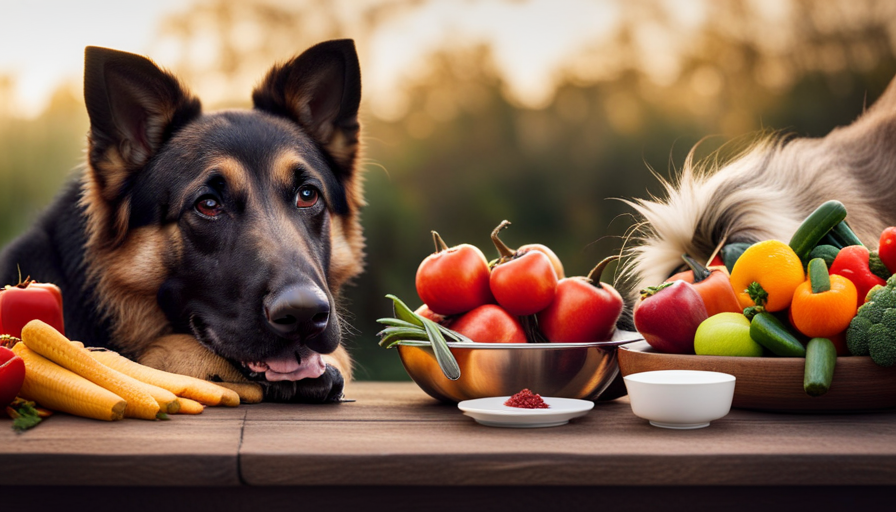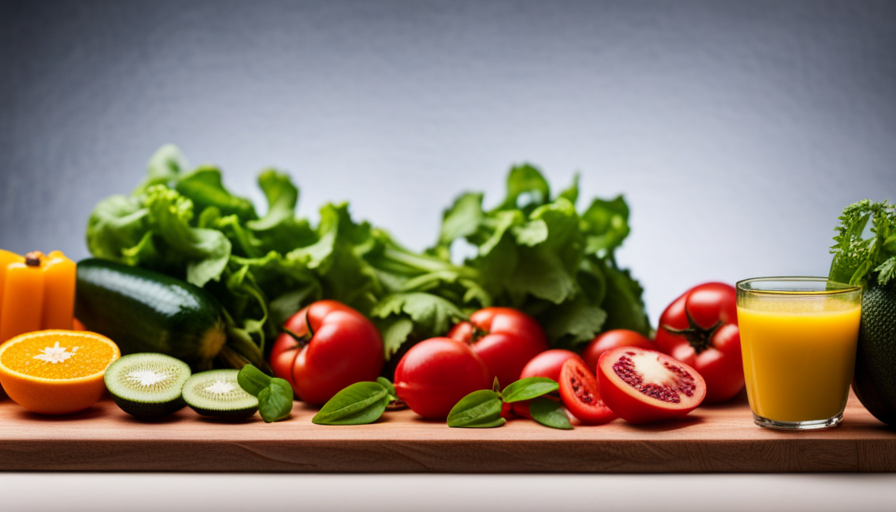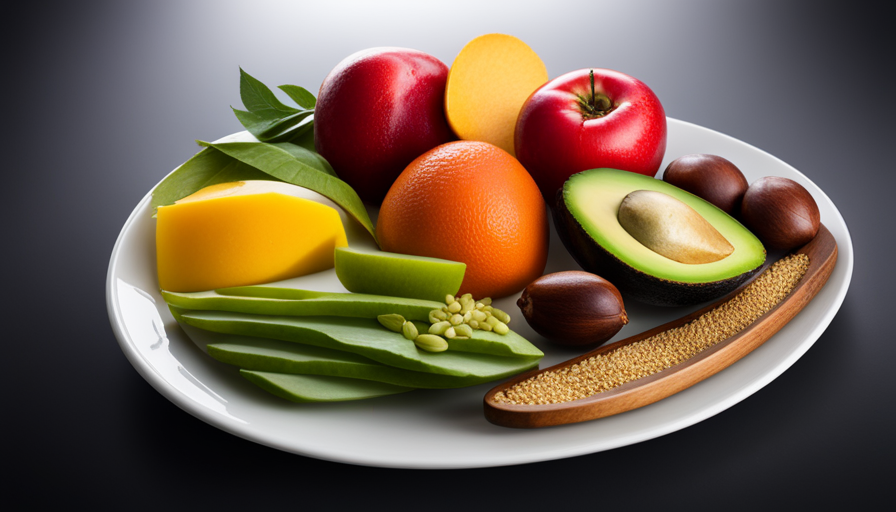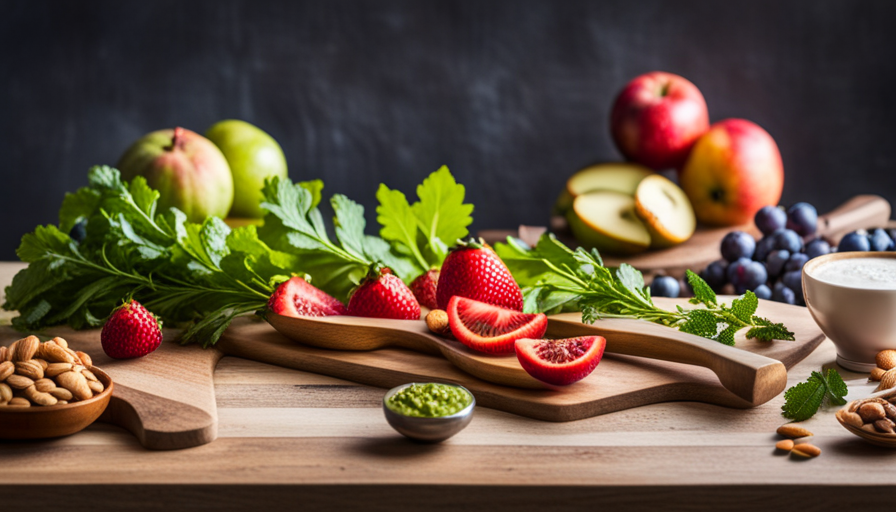Have you ever thought about the intricate balance our bodies navigate when it comes to eating raw chicken? It’s a bit like a high-wire act, where a single misstep can result in a stomach-turning catastrophe. Yes, I’m referring to food poisoning. That unpleasant ordeal we all strive to steer clear of.
But if, heaven forbid, you find yourself in a situation where you’ve ingested raw chicken, it’s important to know how long it will take for the effects to hit you like a ton of bricks. In this article, we will dive into the intriguing world of food poisoning from raw chicken, exploring the common symptoms and the mysterious timeframe for their onset.
We will also discuss the factors that influence this timeframe, the average time for symptoms to appear, and the essential steps for treatment and recovery. So, buckle up and prepare to navigate the treacherous waters of food poisoning from raw chicken.
Key Takeaways
- Symptoms of food poisoning from raw chicken can start within a few hours to a couple of days after consumption.
- Nausea and vomiting are early signs of food poisoning from raw chicken, occurring within a few hours to a day after consumption.
- The incubation period for symptoms of food poisoning from raw chicken is typically 6-48 hours.
- Severe symptoms such as bloody diarrhea, high fever, or persistent vomiting warrant immediate treatment.
Understanding Food Poisoning from Raw Chicken
You won’t believe how quickly the effects of food poisoning from raw chicken can hit you! Understanding the risk factors and practicing proper food safety is crucial when it comes to preventing this unpleasant experience.
Raw chicken can be contaminated with harmful bacteria like Salmonella or Campylobacter, which can cause food poisoning if ingested. These bacteria can be present in the intestines and feces of poultry, and they can easily spread to other surfaces and foods if proper precautions aren’t taken.
To minimize the risk of food poisoning from raw chicken, it’s essential to handle and cook it properly. Always wash your hands thoroughly with soap and warm water before and after handling raw chicken. Use separate cutting boards and utensils for raw chicken to avoid cross-contamination with other foods. Cook chicken to an internal temperature of at least 165°F (74°C) to kill any bacteria that may be present.
It’s important to note that the time it takes for food poisoning symptoms to appear can vary. Generally, symptoms can start within a few hours to a couple of days after consuming contaminated raw chicken. These symptoms may include nausea, vomiting, diarrhea, abdominal pain, and fever. So, if you start experiencing these symptoms after consuming raw chicken, it’s crucial to seek medical attention promptly.
Moving on to the next section about common symptoms of food poisoning, let’s explore the signs that can help you identify if you’ve fallen victim to raw chicken contamination.
Common Symptoms of Food Poisoning
When it comes to food poisoning, there are several common symptoms that can occur. These include nausea and vomiting, diarrhea, and abdominal pain. These symptoms can vary in severity and can often be a result of consuming contaminated food, such as raw chicken.
Nausea and Vomiting
After consuming raw chicken, the first signs of food poisoning may include experiencing intense nausea and vomiting. These symptoms typically occur within a few hours to a day after consuming contaminated food. Nausea is a discomfort in the stomach that often leads to an urge to vomit. Vomiting, on the other hand, is the forceful expulsion of stomach contents through the mouth. The combination of these symptoms can be extremely distressing and debilitating.
It’s important to note that food poisoning from raw chicken is caused by the presence of harmful bacteria, such as Salmonella or Campylobacter. If it’s left untreated, food poisoning can lead to complications such as dehydration and electrolyte imbalances.
Moving on to the next section about diarrhea, this is another common symptom of food poisoning that often accompanies nausea and vomiting.
Diarrhea
Don’t be surprised if you find yourself rushing to the bathroom due to an unpleasant bout of diarrhea. When you consume raw chicken contaminated with harmful bacteria like Salmonella or Campylobacter, it can lead to food poisoning. Diarrhea is one of the common symptoms that can occur within a few hours to a couple of days after consuming contaminated chicken.
It is essential to stay hydrated and replenish electrolytes lost through diarrhea. Drinking clear fluids and oral rehydration solutions can help prevent dehydration. In severe cases, medical treatment might be necessary to manage the symptoms and prevent complications. Dehydration is a significant risk associated with diarrhea caused by food poisoning, so it’s crucial to seek medical attention if symptoms worsen or persist.
Moving on to the next section about abdominal pain, it’s important to be aware of this potential symptom.
Abdominal Pain
Experiencing abdominal pain can be a distressing symptom that may indicate an underlying issue related to your digestive system. When it comes to food poisoning from raw chicken, abdominal pain can vary in severity depending on the individual. The pain may range from mild discomfort to intense cramping.
Here are five potential manifestations of abdominal pain in cases of food poisoning:
- Constant, sharp pain in the stomach area
- Cramping and bloating
- Pain that worsens with movement or pressure
- Nausea and vomiting
- Pain that radiates to the back or chest
It is important to note that severe or persistent abdominal pain can be a sign of complications such as dehydration, organ damage, or infection. Therefore, seeking medical attention is crucial.
Moving on to the subsequent section about the timeframe for onset of symptoms, it’s important to understand how long it takes for the effects of food poisoning from raw chicken to appear.
Timeframe for Onset of Symptoms
Typically, it takes about 6-48 hours for symptoms of food poisoning from consuming raw chicken to appear, leaving the individual feeling nauseous and experiencing severe abdominal pain. The timeframe for the onset of symptoms can vary depending on several factors.
One of the key factors affecting the incubation period is the number of bacteria ingested. If a large amount of bacteria is consumed, symptoms may appear sooner, whereas a smaller amount may result in a longer incubation period.
Additionally, the way the raw chicken is prepared can also influence the onset time. If the chicken isn’t cooked properly, it increases the risk of bacterial contamination and can lead to a quicker onset of symptoms.
It’s important to note that everyone’s body reacts differently, so the onset time can vary from person to person. Factors such as age, overall health, and immune system strength can also play a role in how quickly symptoms appear.
Understanding the timeframe for the onset of symptoms is crucial in identifying and seeking medical attention promptly.
Moving forward, let’s explore the factors that can affect the onset time of food poisoning from raw chicken consumption.
Factors That Affect the Onset Time
To better understand when symptoms may arise, consider factors that can influence the onset time of food poisoning from consuming raw chicken. The time it takes for symptoms to appear can vary depending on several factors:
-
Bacterial load: The higher the level of bacteria present in the raw chicken, the shorter the incubation period tends to be. This is because a larger number of bacteria can cause infections more quickly.
-
Individual immune system: Each person’s immune system is unique and will respond differently to the presence of harmful bacteria. A stronger immune system may be able to fight off the infection for a longer period of time before symptoms develop.
-
Type of bacteria: Different types of bacteria can have different incubation periods. Salmonella, for example, typically causes symptoms within 12-72 hours after consuming contaminated food.
Understanding these factors can help us anticipate when symptoms may appear after consuming raw chicken. It’s important to note that the onset time can vary from person to person and case to case.
In the next section, we’ll explore the average time for symptoms to appear after consuming raw chicken.
Average Time for Symptoms to Appear
The clock ticks as the body battles against the invisible invaders, waiting for the subtle signs of illness to make their presence known. When it comes to food poisoning from raw chicken, the average incubation period can vary depending on several factors. However, most people start experiencing symptoms within 6-48 hours after consuming contaminated chicken.
The table below provides a breakdown of the average time for symptoms to appear after ingesting raw chicken:
| Time After Consumption | Early Warning Signs |
|---|---|
| 6-12 hours | Nausea and vomiting |
| 12-24 hours | Abdominal cramps |
| 24-48 hours | Diarrhea |
| 48-72 hours | Fever and chills |
| 72+ hours | Fatigue and weakness |
It is important to note that these are average times, and individual experiences may vary. Some people may start experiencing symptoms sooner or later than the average incubation period. If you suspect food poisoning from raw chicken, it is crucial to seek medical attention promptly. Early intervention can help prevent complications and ensure proper treatment. So, if you notice any of these early warning signs, don’t hesitate to contact a healthcare professional.
Now, let’s explore what steps you should take when seeking medical attention for food poisoning.
Seeking Medical Attention
When you start experiencing symptoms of food poisoning, it’s important to promptly seek medical attention to ensure proper diagnosis and treatment.
While most cases of food poisoning resolve on their own within a few days, certain situations warrant a visit to the doctor. If you have severe symptoms such as bloody diarrhea, high fever, or persistent vomiting, it is crucial to seek treatment immediately. Additionally, if you’re pregnant, have a weakened immune system, or are elderly, it’s important to see a doctor as soon as symptoms arise, as these groups are at higher risk for complications.
When you visit a healthcare professional, they’ll evaluate your symptoms, perform any necessary tests, and provide appropriate treatment. They may recommend rehydration through intravenous fluids or prescribe medications to alleviate symptoms and fight off any bacterial infection. In some cases, hospitalization may be necessary, especially if dehydration or other complications arise.
It’s important to remember that seeking medical attention promptly can help prevent further complications and ensure a quicker recovery. After receiving treatment, the next step is to focus on rest and hydration to aid in your recovery from food poisoning.
Treatment and Recovery
As you recover from food poisoning, it’s essential to prioritize rest and hydration, allowing your body the time and nourishment it needs to heal. Treatment options for food poisoning caused by raw chicken include both medical interventions and home remedies. Here are some options to consider:
-
Medical Interventions:
- Antibiotics: In severe cases, your doctor may prescribe antibiotics to help fight off the infection.
- Intravenous fluids: If you’re experiencing dehydration, your doctor may recommend intravenous fluids to replenish your body’s electrolytes and fluids.
-
Home Remedies:
- Hydration: Drink plenty of fluids, such as water, clear broths, and electrolyte-rich drinks, to replace fluids lost through vomiting and diarrhea.
- Rest: Take it easy and allow your body to recover by getting plenty of rest.
- BRAT diet: Stick to a bland diet consisting of bananas, rice, applesauce, and toast to help soothe your stomach.
It’s important to note that while these treatment options can help alleviate symptoms, they may not cure the underlying infection. To prevent future cases of food poisoning, proper food handling, cooking chicken thoroughly, and practicing good hygiene are crucial steps to take.
Preventing Food Poisoning
To avoid getting sick from eating undercooked chicken, it’s crucial to practice proper food handling and hygiene. Food safety should always be a priority when it comes to handling raw chicken.
First and foremost, make sure to wash your hands thoroughly with soap and warm water before and after handling chicken. This helps to remove any potential bacteria that may be present.
Additionally, it’s important to keep raw chicken separate from other foods, especially those that’ll be consumed raw, such as fruits and vegetables. This prevents cross-contamination and reduces the risk of food poisoning.
Proper cooking techniques are also essential in preventing foodborne illnesses. Chicken should be cooked to an internal temperature of 165°F (74°C) to kill any harmful bacteria, such as Salmonella or Campylobacter. Using a food thermometer is the most accurate way to determine if the chicken is fully cooked.
It’s also important to avoid partially cooking chicken and then refrigerating it for later consumption, as this can allow bacteria to multiply.
By following these food safety guidelines and using proper cooking techniques, you can greatly reduce the risk of food poisoning from raw chicken.
It’s important to be aware of the signs of severe food poisoning, such as persistent vomiting and diarrhea, as prompt medical attention may be necessary.
Signs of Severe Food Poisoning
Now that we’ve discussed how to prevent food poisoning, let’s move on to the signs of severe food poisoning. It’s important to be aware of these signs so you can seek medical attention if necessary. Severe food poisoning can lead to potential complications and long-term effects if not treated properly.
The signs of severe food poisoning can vary depending on the type of bacteria or virus causing the infection. Common symptoms include severe abdominal pain, persistent vomiting, high fever, and bloody diarrhea. In some cases, the infection can spread to other parts of the body and cause more serious complications like kidney failure or meningitis.
If you experience any of these symptoms after consuming raw chicken or any other contaminated food, it’s crucial to seek medical help immediately. A healthcare professional can diagnose the infection and provide appropriate treatment to prevent further complications.
In conclusion and final thoughts, it’s essential to practice proper food safety measures to prevent food poisoning. However, if you do experience severe symptoms, it’s crucial to seek medical attention promptly. Remember, early intervention can help prevent potential complications and long-term effects.
Conclusion and Final Thoughts
Don’t forget to prioritize proper food safety measures and seek immediate medical attention if you experience any severe symptoms. Being aware of the signs of severe food poisoning is crucial to ensure timely treatment and prevent any long-term effects. Delayed treatment can lead to serious consequences, such as dehydration, organ damage, and in extreme cases, even death. It’s important to note that the effects of food poisoning can vary depending on the individual and the specific strain of bacteria or virus involved.
To summarize the information discussed in the previous subtopic, here is a table that outlines some common signs of severe food poisoning:
| Symptoms | Duration |
|---|---|
| Nausea | 1-2 days |
| Vomiting | 1-2 days |
| Diarrhea | 3-7 days |
| Abdominal pain | Varies |
| Fever | Varies |
It’s crucial to seek medical attention if you experience any of these symptoms for an extended period or if they worsen over time. Neglecting proper treatment can lead to long-term effects, including weakened immune system, chronic digestive issues, and complications in vulnerable individuals such as young children, pregnant women, and the elderly.
Prompt medical intervention is essential to prevent the consequences of delayed treatment and minimize the long-term effects of food poisoning. Remember to practice good food safety habits and seek immediate medical attention if you suspect food poisoning.
Frequently Asked Questions
Can you get food poisoning from cooked chicken?
Yes, you can still get food poisoning from cooked chicken if it isn’t handled or cooked properly. To prevent this, make sure to cook chicken thoroughly, with an internal temperature of 165°F. Properly store and handle raw chicken separately from other foods to avoid cross-contamination. Symptoms of food poisoning from cooked chicken can include nausea, vomiting, diarrhea, abdominal pain, and fever. If you experience these symptoms, it’s important to seek medical attention.
What are the most common types of bacteria found in raw chicken that can cause food poisoning?
The most common types of bacteria found in raw chicken that can cause food poisoning are Salmonella and Campylobacter. These bacteria can lead to symptoms like diarrhea, vomiting, and abdominal pain. To prevent food poisoning, it’s crucial to handle raw chicken properly.
This includes washing hands and utensils thoroughly, cooking chicken to the appropriate internal temperature, and avoiding cross-contamination with other foods. Taking these prevention measures can significantly reduce the risk of getting sick.
How long does it take for symptoms of food poisoning from raw chicken to subside?
Food poisoning symptoms from raw chicken typically subside within a few days. To prevent food poisoning, it’s important to handle and cook raw chicken properly. Cooking chicken to an internal temperature of 165°F (74°C) kills harmful bacteria. It’s also crucial to avoid cross-contamination by washing hands, utensils, and surfaces that come into contact with raw chicken. Refrigerating leftovers promptly can also help prevent the growth of bacteria.
Are there any long-term effects of food poisoning from raw chicken?
Long-term effects of food poisoning from raw chicken can vary. Complications such as kidney damage, nerve problems, and arthritis have been reported. Recovery time depends on the severity of the poisoning and can range from a few days to weeks. Treatment options include drinking plenty of fluids to prevent dehydration, resting, and taking medications to relieve symptoms. It’s important to seek medical attention if symptoms persist or worsen.
Can you still get food poisoning if you’ve consumed raw chicken but don’t have any symptoms?
Yes, it’s possible to get food poisoning from undercooked chicken, even if you don’t have any symptoms. The immediate symptoms of food poisoning from raw chicken can include nausea, vomiting, abdominal pain, diarrhea, and fever. It’s important to note that the onset of symptoms can vary and may take several hours to days to appear. It’s always best to ensure that chicken is thoroughly cooked to prevent the risk of food poisoning.
Is the Recovery Time for Food Poisoning from Raw Lobster and Oysters the Same as from Raw Chicken?
The healing time for food poisoning can vary depending on the source of contamination. While raw lobster and oysters can cause food poisoning, raw chicken is a more common culprit. The recovery time for food poisoning from raw lobster and oysters may differ from that of raw chicken due to the different bacteria involved.
Conclusion
In conclusion, experiencing the effects of food poisoning from raw chicken can feel like being caught in a whirlwind of pain and discomfort. It’s crucial to remember that the onset of symptoms can vary depending on several factors, such as the individual’s immune system and the amount of contaminated chicken consumed. However, on average, symptoms may appear within 6 to 48 hours.
It’s essential to seek medical attention promptly and take necessary precautions to prevent food poisoning. Remember, just like a sudden storm, food poisoning can strike without warning, so stay vigilant and prioritize food safety.










